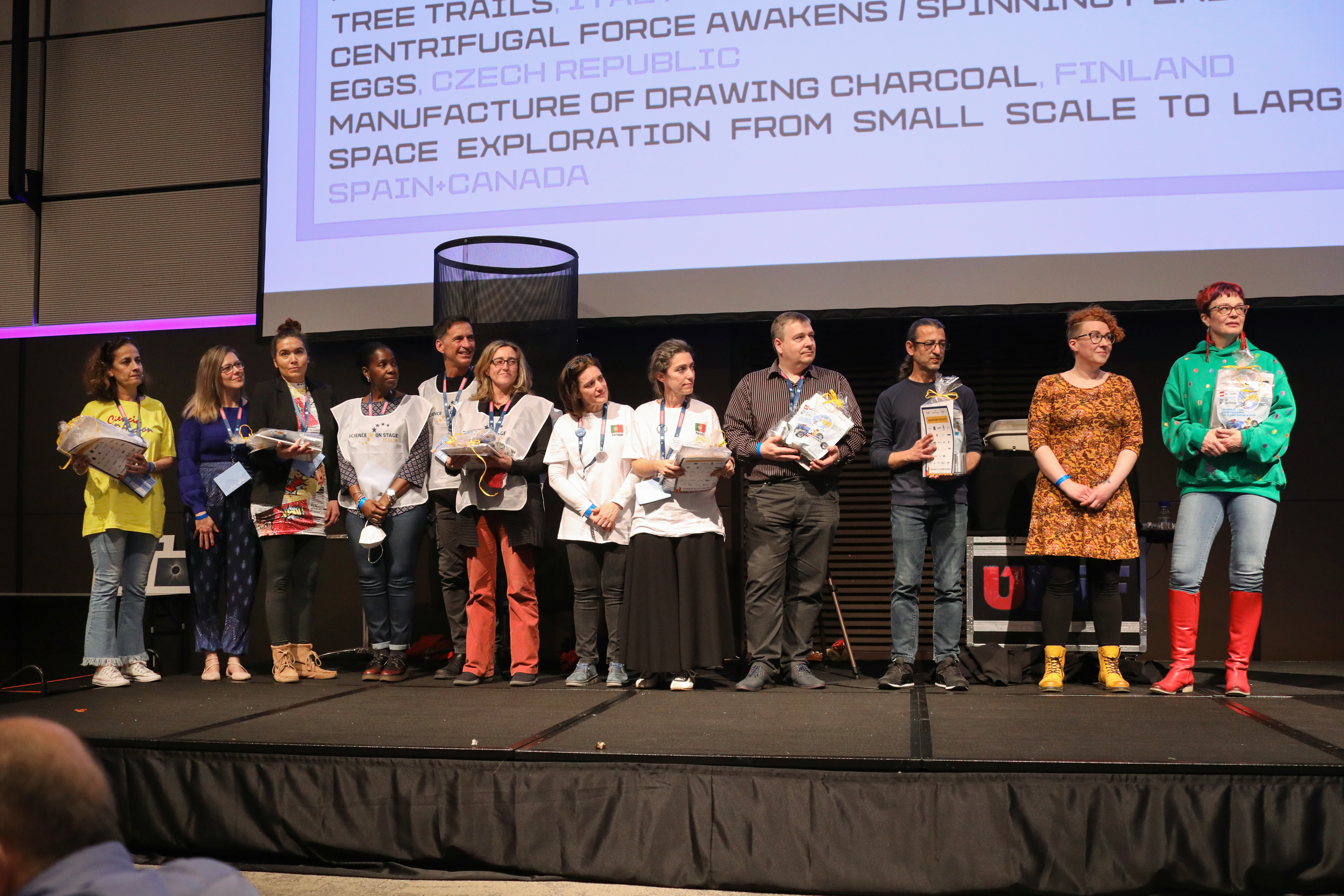The Highly Commended projects 2022
These are the Highly Commended projects at the European Science on Stage Festival 2022!

In the category "Science for the Youngest":
ENERGY + STRENGTH = BIRDIE - Véronique Corbeil and Geneviève Lapointe-Larouche, Canada
How can we encourage boys to like school?
How can we make learning fun?
How can we support teachers in a skills-based approach?
Turn your (10-13 year-old) students into business apprentices!
This interdisciplinary kit includes a STEM challenge in the science/math section. The educational intent is to design a minigolf course by integrating mathematical concepts as well as the scientific notions of instrumentation, energy and strengths (including speed and friction) present on a minigolf course. This STEM challenge relates well to experimentation, learning and use of technology. Cross-curricular project 100% adapted to 21st-century learners!
Nature Answers - Rute Oliveira and Teresa Reis, Portugal
“Nature Answers" is a project for pre-school and primary school children that proposes 8 challenges related to global issues such as the need to save resources and how we protect ourselves from extreme temperatures, among others. Our children went to observe, listen, touch and explore nature in the school yard. They observed nature and tried to understand how it responds to these challenges. For instance, with bees and bubbles they learned how they save resources. STEAM activities were carried out, with very simple and low-cost material. Support was provided by science teachers who built a website with the information and a YouTube channel with instructional tutorials.
In the category "Sustainable Development Goals in Education":
Tree Trails - Prof Chiara Colucci and Alberto Conte, Italy
CO2 emissions and their reduction are part of the public debate. Our aim is to look at the problem from a different perspective: to what extent is it possible to capture the carbon dioxide which is already in the atmosphere? From this inquiry prompt, students investigate how much trees contribute to CO2 sequestration: a Fermi problem applied to the playground area near the school which we relate to the calculation of the volume of the trees. Kids measure the diameter and the height of trees using different methods, such as a NASA app which enables them to be part of a worldwide citizen science project. The activity is proposed to grade 7 but could be extended to a high school math curriculum.
In the category "Technologies in STEM Education":
Centrifugal Force Awakens /spinning pendulum - Anastasios Iona, Cyprus
This project concerns the presentation of an experimental device which allows the experimental study of the simple gravity pendulum.
With the help of this experimental device, students can study the dependence of the period of the simple gravity pendulum from the gravitational acceleration. This objective has been a challenge for a long time, since it is hard to find a practical way of changing the acceleration of gravity. The experimental setup to be presented, is relatively simple to construct and of very low economic cost. In addition to its basic purpose, it could also be used to teach relative motions, pseudo-forces, circular motion etc.
In the category "Diversity in STEM Education":
Eggs - Milan Chalupník, Czech Republic
It is a multidisciplinary project that aims to motivate students for future interest in physics. The program allows students to look at eggs in terms of multiple disciplines (physics, history, biology, architecture). During the project, students observe, research, experiment, and argue. The program is taught for about two lessons. It is taught in the 5th grade of primary school. During the lessons, students also build from cubes, recognize the eggs of various animals and experiment with eggs themselves.
In the category "STEM with Arts":
Manufacture of drawing charcoal - Maikku Aho and Teija Lauronen, Finland
The objective of the project was to investigate and test whether drawing charcoal can be made with students. We conducted research at the Forssa School of Fine Arts for Children and Young People in the LUMA combination group where students are 8-10 years old, and the group has two teachers (co-teaching). The students were given tree branches, and they made approx. 15 cm long pieces of them and peeled off the bark with knives.
The pieces were set in the middle of a campfire in a metal box and kept there for an hour. After cooling down, the drawing charcoal was ready to use, and the students tried to use it in their drawings.
In the category "Joint Project":
Space exploration from small scale to large scale - Carolina Clavijo Aumont, Spain and Canada
Every day on Earth, micrometeorites land on our roofs. The Earth, in its trajectory through stardust, intercepts different objects, with the help of the force of gravity. We developed an experimental method to detect and make a micrometeorite collection. Efforts were interrupted by the pandemic, affecting results. To create context for these tiny particles, students also examined the scale of the solar system in which these particles exist. To better understand scales in solar system, an online resource provided a tool for mapping planetary orbits onto a digital map of their familiar location. Students in Spain and Canada presented to each other and shared cultural connections.